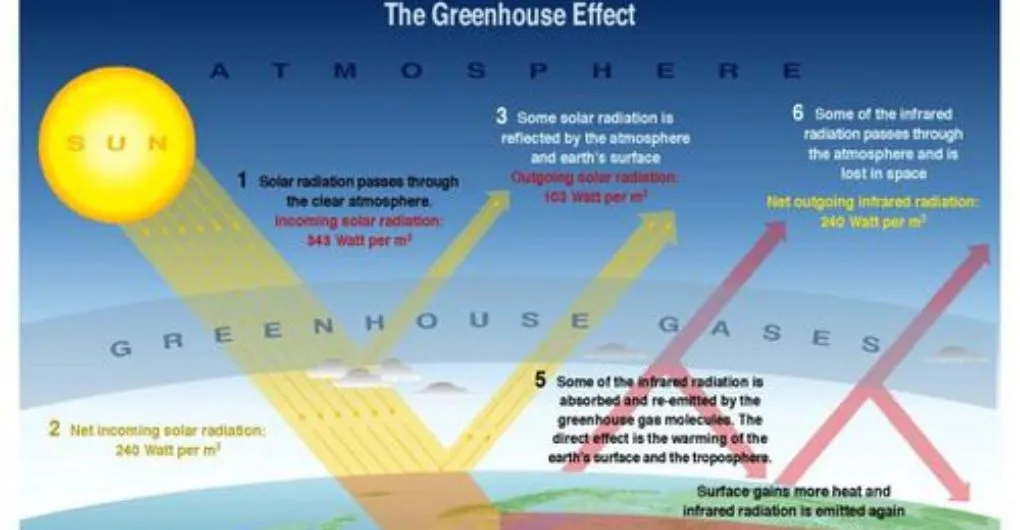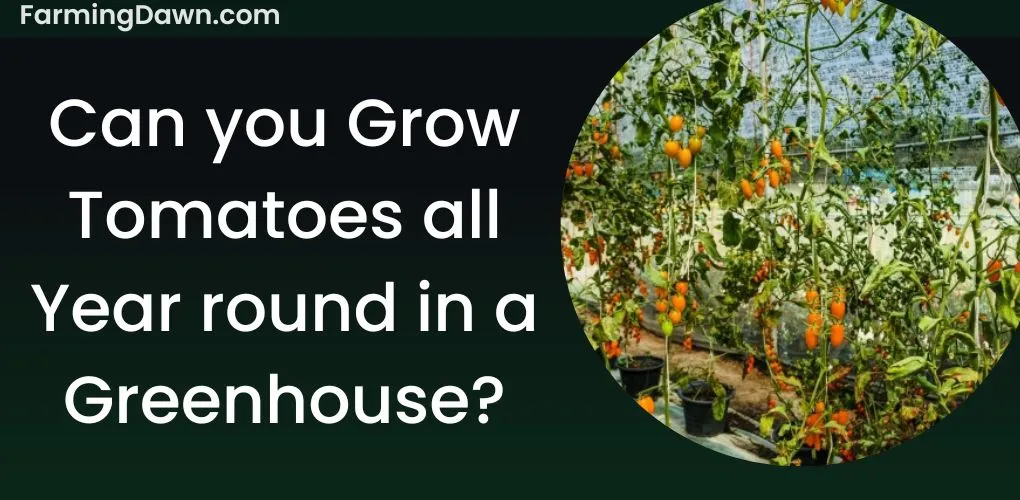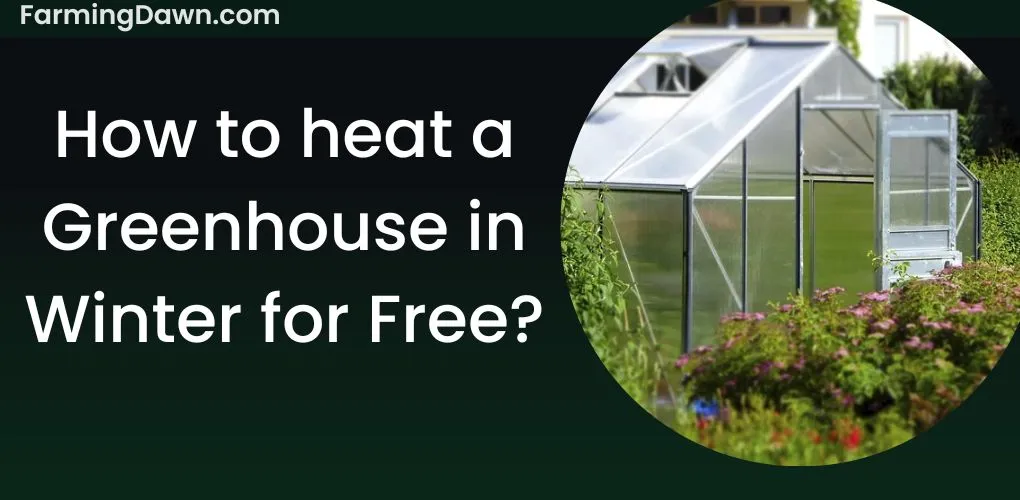The greenhouse is one of the most essential innovations in present agriculture. Every farmer and gardener has wondered how does greenhouse work ever since they were first invented. As a farmer, I have invested a lot of time observing and experimenting with them, and I can tell you that greenhouses are utilized for more than just growing tomatoes in the winter.
In truth, greenhouses are an essential tool for any farmer or gardener who wants to extend their growing season, safeguard their crops from pests, or even try out new types. Online sources for information about managing a greenhouse overwhelmingly employ outmoded practices.
Today I will discuss how does greenhouse work and what does a greenhouse need to give you a successful yield of your vegetables. Be ready to learn everything there is to learn about operating a greenhouse and why they are such an important tool for farmers.
How does greenhouse work to help plants grow?
You probably think greenhouses do a great job of retaining heat, right? And you’re aware, without a doubt, that they can generate the ideal temperature for your plants to thrive. How on earth does a greenhouse maintain a temperature that is so much higher than its surroundings? The first step in this process is the greenhouse effect. Let’s look at the complete procedure:
The greenhouse effect
When the sun’s energy enters the Planet’s atmosphere and absorbed by the earth’s surface, the greenhouse effect takes place naturally. The energy is subsequently released as heat back into the atmosphere. Gases like carbon dioxide, methane, and water vapor absorb this heat and surround the Earth like a blanket, keeping it warm.

How sunlight enters and warms up the greenhouse
The translucent walls and roof of a greenhouse allow sunshine to pass through, as a result warming the inside air and surfaces. The same gases capture heat in the Earth’s climate and then keep the heat inside the greenhouse. This produces a warm, humid environment ideal for plant growth.
How heat is retained within the greenhouse
To maintain the temperature inside the greenhouse, ventilation, and airflow are essential. As well as preventing the accumulation of too much moisture and humidity, which can result in mold growth and illness, fresh air is required to replace the carbon dioxide plants need for photosynthesis.
How ventilation and air circulation work
Vents and fans are positioned carefully in a well-designed greenhouse to encourage air movement and avoid hot spots. All plants receive the same amount of heat and light thanks to the consistent distribution of temperature across the growing space.
The role of humidity and moisture
The role of humidity and moisture in the greenhouse cannot be overstated. While too much moisture can encourage the growth of dangerous bacteria and fungi, too little moisture can cause plants to dry out and wilt. Growers frequently use humidifiers or misters to keep the air wet to maintain ideal humidity levels.
What does a greenhouse need to work properly?
- Enough sunlight
First and foremost, a greenhouse needs plenty of sunlight. The sun’s rays provide the energy that plants require to develop and thrive properly, so it’s crucial to place your greenhouse in an area that receives enough sunlight throughout the day.
The best locations are those that face south as they receive the most sunshine. But, you should also consider any shade from nearby trees or structures that could reduce the amount of sunlight reaching your greenhouse.
- Consistent water supply
A greenhouse also requires a consistent supply of water in addition to sunlight. To perform photosynthesis and absorb nutrients from the soil, plants need water, thus it’s critical to ensure your greenhouse is properly irrigated.
Whether you choose to manually water your plants or set up an automatic irrigation system, be sure to monitor the soil’s moisture content to avoid over- or under-watering.
- Temperature controls
Another essential component for the greenhouse farming is temperature control. Greenhouses can get very hot during the day, so it’s crucial to have the proper ventilation to allow hot air to escape. To control the temperature within your greenhouse, you can add vents or fans.
If you want to do things yourself, you can also manually open the doors and windows. Moreover, you might want to think about putting a shade cloth over your greenhouse to save your plants from overheating on extremely sunny days.
- Nutrient-rich soil
Finally, a greenhouse needs an abundant supply of nutrients in the soil for your plants to flourish. You can use compost or potting soil for your plants, based on your wish.
Peat moss, perlite, and vermiculite are ingredients in potting soil, which gives plants adequate drainage and aeration. Contrarily, compost is a mixture of decomposed organic materials that offer nutrients and aid in moisture retention.
Greenhouse Design Considerations
- Location and orientation
There are several things to consider when designing a greenhouse to make sure it is practical and effective. The location of the greenhouse is important since it can affect the greenhouse’s temperature, lighting, and ventilation.
Choose a location that receives lots of sunshine and does not allow high winds. It’s important to consider the greenhouse’s direction as well. Position the greenhouse such that it receives the most sunlight possible throughout the winter.
- Size and shape
Significant design factors also include size and shape. The size of the greenhouse should be based on the amount of accessible space and the intended use. A larger greenhouse would be perfect if you intend to cultivate plenty of flowers. Design a unique shape of greenhouse that allows maximum sunlight and ventilation.
- Greenhouse covers
It’s crucial to pick the appropriate coverings and materials for your greenhouse. Greenhouse covers are most frequently made of glass, polycarbonate, and polyethylene.
Glass transmits light very well, although it can be costly and heavy. While more resilient and insulating than glass, polycarbonate can be pricey. Polyethylene is the least expensive alternative, but it does not provide as much insulation as the other options.
- Production and efficiency
The production and efficiency of your greenhouse can be improved by incorporating technology and automation. Your greenhouse design must include automatic ventilation systems, heating and cooling systems, as well as automated watering and fertilizing systems.
These devices can be operated remotely, which makes remote management of your greenhouse simpler.
How to make a cheap greenhouse?
Materials needed for greenhouse
- A sturdy foundation made of concrete.
- A frame made of galvanized steel or aluminum tubing.
- High-quality greenhouse plastic or glass
- A greenhouse ventilation system.
- The heating system or insulation
- A watering system
- Shelving or benches
- A good quality soil
Step by Step Instructions to build a cheap Greenhouse
Start with a sturdy foundation made of concrete or lumber. This will the stability of your greenhouse regardless of the weather. After that, construct a frame from aluminium or galvanized steel tubing and firmly anchor it to the ground.
Once your frame is set up, cover it with premium greenhouse plastic or glass. This will protect your plants from the weather, and they will be able to flourish in a controlled setting.
A ventilation system must be implemented in a way that controls the temperature and airflow. A heating system or insulation may also be necessary to keep your greenhouse warm during colder months.
Install a watering system that will distribute water uniformly throughout the greenhouse to keep your plants healthy and growing. Also, adding seats or shelving can give your plants more room to expand.
Finally, use high-quality soil to give your plants the nutrition they need to flourish.
How does greenhouse work in the winter?
As I explained that greenhouses are typically made of a transparent material, such as glass or plastic, that allows sunlight to enter and warm up the interior. However, maintaining a warm greenhouse during the winter might be difficult.
The heat inside the greenhouse can easily escape through the walls and roof when the outside temperature falls below freezing. This is where insulation comes in.
Every greenhouse that is used in the winter must have adequate insulation. You can aid your greenhouse in retaining heat inside and preventing it from evaporating by installing insulation to the walls and roof. It can be made out of fiberglass, foam, or straw bales, among other materials.
Using a heating system is another technique to get a heated greenhouse for the winter. Electric heaters, gas heaters, and even wood-burning stoves are just a few of the heating options accessible.
Even when the outside temperature falls below zero, these heating systems can assist maintain a constant temperature inside the greenhouse.
Of course, it’s essential to keep in mind that plants also require light to flourish. Because the days are shorter and the sun is not as strong during the winter, plants might not receive enough light to survive. You can install grow lights inside the greenhouse to solve that problem.
These lights enable your plants to grow and thrive even during the year’s darkest months since they closely resemble the intensity and spectrum of sunlight.
Conclusion
My friends, now you know how does greenhouse work. Greenhouses are a true wonder of modern agriculture, capable of harnessing the power of the sun and providing a regulated environment for your plants. However, keep in mind that caring for your plants and using the right technology go hand in hand. So why not give it a try? Who knows, you might end up producing the largest, juiciest plants or vegetables.





